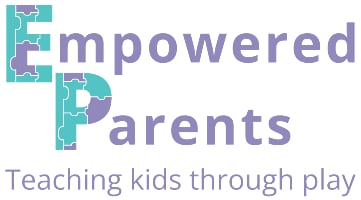Crossing the midline is a key building block in developing pre-writing and pre-reading skills and is an important aspect of child development.
Here are 15 simple crossing the midline activities for preschoolers and toddlers.
What is Crossing the Midline?
The midline referred to is an imaginary line that goes vertically down the centre of the body.
Crossing this line through movement, such as reaching one hand across the body to pick something up, is what occupational therapists, teachers and other specialists mean when they talk about children learning to cross the midline.
How Do Children Learn to Cross the Midline?
Most children will naturally cross the midline of the body as they develop body awareness through play and activities in daily life.
As babies begin to reach for toys or other objects with their hands, they learn to cross the midline of their bodies. Mastering the skill of rolling over also requires the ability to cross the midline in order to create the necessary motion and rotation to roll.
As children grow, everyday tasks like putting on shoes and socks often require them to cross the midline. Children must build bilateral integration skills which help them to use the left and right sides of the body together to perform movements. This is also known as bilateral coordination.
Crossing the midline becomes embedded as a skill between the ages of 6 and 8 and is usually fully developed by age 8 or 9.
Why is Crossing the Midline Important?
Firstly, it helps children to be independent and to interact more with the environment.
For example, a young child who has plenty of practice crossing the midline is more likely to be able to dress themselves, pour a drink of water and feed themselves using a knife and fork.
In play, children who can cross the midline easily are able to reach across their body, take hold of an object, and can play two-handed, with a toy in each, which vastly increases their play opportunities.
How Does Midline Crossing Affect School Work?
The ability to cross the midline also has implications for schooling. By the time children reach formal school, they need to have developed the ability to use tools such as scissors, crayons and pencils.
Usually, children will also have developed a strong preference for which hand they carry out these activities with. The ability to spontaneously cross the midline plays an important role in developing hand dominance.
Children also learn to write on a line, beginning on the left side of the page. Being able to cross the midline means they do not need to swap hands when writing, as they can lean across when moving from left to right.
Midline crossing is also important for reading. A child with difficulties crossing the midline may have poor visual tracking skills and struggle to follow the text on the page (crossing over to the left when reading from left to right).
15 Midline Crossing Activities for Preschoolers
Here are some fun crossing midline activities to try at home or at school.
1. Sorting Activities
Sorting activities are a great way of working on early maths and sorting objects into 2 or more piles also encourages crossing the midline to place objects into the correct pile.
2. Clapping Games
Most cultures play some sort of clapping game where a series of movements are performed with another person – slapping knees, clapping your own hands and slapping hands together being common ones.
These are usually accompanied by rhymes such as “Miss Mary Mack” or “High Low Chicka Low.”
These midline crossing games not only build rhythm and coordination but encourage lots of reaching across the body and using opposite hands.
Here are some great clapping games for kids.

3. Giant Weaving and Braiding
Create a giant braiding activity with skipping ropes, or a large-scale frame for weaving (some chickenwire in a frame so the edges aren’t sharp will do the trick).
Provide some ribbon and get your children reaching across their bodies as they braid or weave, building important fine motor skills and control at the same time.
4. Art on Vertical Surfaces
Painting on easels, or drawing on walls with chalk, has huge benefits to the development of crossing the midline.
Again, this is an activity where children are likely to start using one hand to reach up and across to create shapes and lines.
These large-scale movements help to develop muscles that will later be needed for pen or pencil control.
5. Sweeping
Sweeping inside or outdoors is one of the best crossing the midline exercises. It also helps develop a preference for handedness.
As your children sweep and make movements across their bodies, they will also build up strength in their hands and arms.

6. Passing Relay
If your child has siblings or friends over for a playdate, set up a line and have them pass objects back and forth along it. Or play this with a class of children.
The turning motion required to receive an object and then pass it to the next person causes the children to cross the midline.
You can make this a fun game by adding timers or filling and emptying baskets by passing the objects out.
You can also create a pass relay by standing back to back with your child and turning to one side to pass an object and then turning to the other to receive it.
7. Washing the Car
Another chore that doubles up as a cross the midline activity is washing the car. Give your child a sponge and some soapy water and encourage them to help with washing the car (or a ride-along toy).
As they scrub and wash in circular motions they will usually get a feel for a dominant hand and begin to use this to reach across and wash to the sides, rather than switching hands.
8. Long Worksheets
Give your kids a long worksheet with a path drawn on to follow using either their fingers or a pencil.
A long worksheet should spread at least a child’s arm span and the centre can be placed in front of them so that they need to cross the midline in order to complete it.
As your child follows the path on the sheet, they are likely to continue using the same hand rather than swapping hands, and in doing so will be exercising the skill of crossing the midline.
9. Yoga
Yoga has many benefits for children and loads of opportunities for crossing the midline. There are plenty of children’s yoga classes available online if you can’t find anything suitable in your area.
Look for poses that involve twists or crossing arms or legs across the body and try to integrate these into a short routine.

10. Dancing with Props
Two dance scarves and some upbeat music can be all the opportunity your children need to cross the midline.
Popular prewriting courses have been based on exactly this premise so put on some music, give your child some scarves, ribbons, or pom-poms and lead them in a dance routine that involves lots of arm movement and rotation. Simple!
11. Obstacle Courses
Obstacle courses build a whole host of pre-writing skills including spatial awareness, core strength and crossing the midline.
Positioning obstacles so that your children have to cross their legs over the other leg in order to reach the next one is a very simple, but effective way to get them crossing the midline and building up some balance at the same time.
12. Small World Play
Small-world play is what early childhood educators use to describe playing with small characters, animals, vehicles, and so on.
Depending on your children’s interests, you can set up a play activity that they will spend ages immersed in. This kind of play often involves an imaginative storyline (the cars racing around a track, two dolls talking to each other) where two objects are interacting.
This encourages two-handedness and crossing the midline to have the objects interact.

13. Football Skills
Football, or soccer, is a great game for crossing the midline. It encourages the development of important gross motor skills and dribbling a ball in and out of cones is fantastic for crossing the midline as well as balance and spatial awareness.
14. Simon Says
Simon Says is an excellent game that can be played to develop a whole host of skills. Give commands that will encourage your kids to build coordination skills.
Here are 70 fun Simon Says commands you can use to have some fun while building this skill.
15. Using Outdoor Play Equipment
Climbing frames and climbing walls all encourage the development of strength, gross motor skills and crossing the midline.
Climbing walls, in particular, encourages children to reach across their bodies for hands and footholds and push and pull themselves up.
What if a Child Has Difficulty Crossing the Midline?
If you notice some midline crossing problems, even after building in opportunities to develop this skill, then consider a more intensive approach.
A child may benefit from occupational therapy and crossing midline activities that are designed by the therapist to suit the needs of the particular child.
I hope you’ll enjoy trying these exercises for crossing the midline!


Amina Hamza
Sunday 17th of April 2022
I really enjoyed the lesson
Tanja Mcilroy
Tuesday 19th of April 2022
Thanks, Amina!
Melanie
Tuesday 15th of February 2022
Awesome! I forgot all about Simon Says and Miss Mary Mack. Great ideas!
Tanja Mcilroy
Tuesday 15th of February 2022
Thanks, Melanie! Enjoy.
KarenCarpenter
Monday 6th of April 2020
Looking for crossing midliine activites/exercises for a parent to work on at home with her child.
Tanja Mcilroy
Saturday 11th of April 2020
Hi Karen, the activities in this article are mostly for doing at home with your kids. Enjoy!